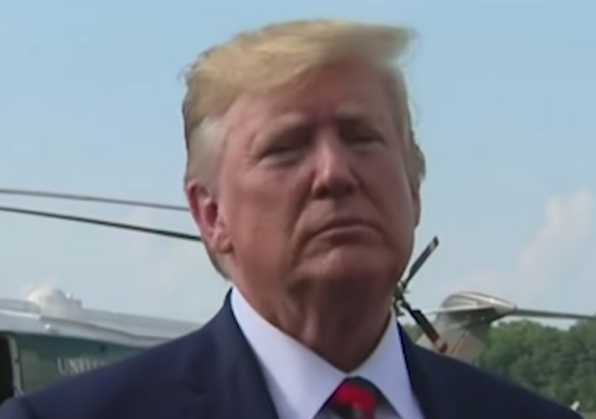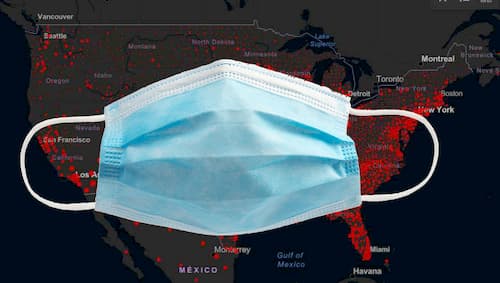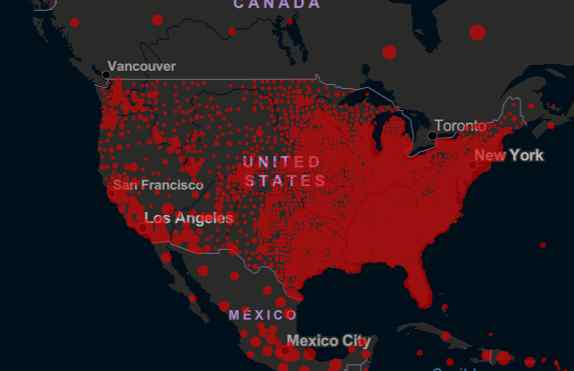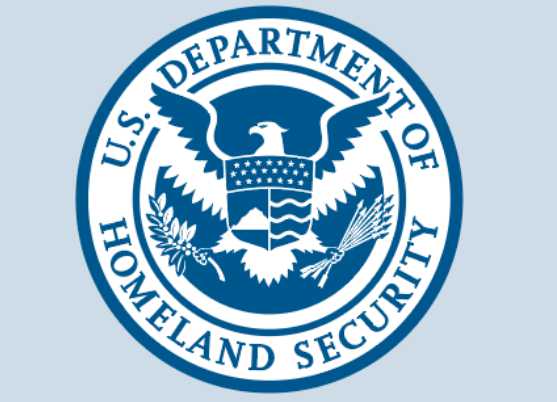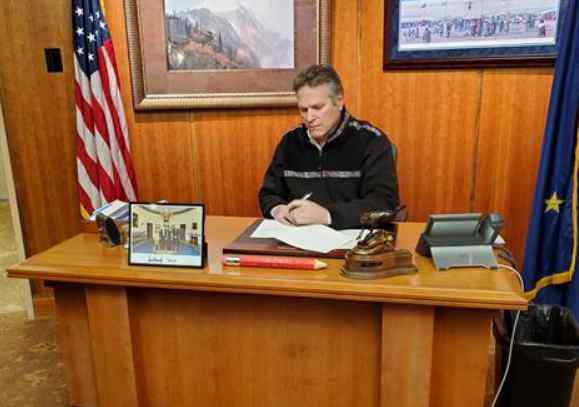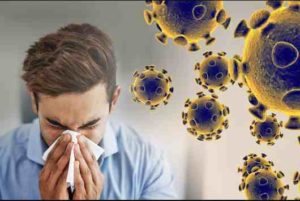
To slow the spread of COVID-19, the State of Alaska is issuing its fifteenth health mandate, based on its authority under the Public Health Disaster Emergency Declaration signed by Governor Mike Dunleavy on March 11, 2020.
While health care is an essential service, there is also the risk of coronavirus spreading in health care facilities and to vulnerable populations. The suspension of non-essential procedures and health care have been beneficial in slowing the spread of the disease. The benefits of suspension must also be balanced with delayed health care and other health outcomes.
Health Mandate 015 is being issued by Governor Mike Dunleavy and the State of Alaska. Mandate 015 will go into effect in phases, with Section II going into effect April 20, 2020 and Section IV going into effect May 4, 2020; however, the State of Alaska reserves the right to amend the Mandate at any time.
This Mandate supersedes Mandate 005 and 006 and affects the health care providers directly addressed in Mandate 009.
Health Mandate 015 – Services by Health Care Providers
I. Applicability: This Mandate applies to the following heath care facilities and health care providers:
- Heath Care Facilities
- Hospitals, private, municipal, state, or federal, including tribal
- Independent diagnostic testing facilities
- Residential psychiatric treatment centers
- Skilled and intermediate nursing facilities
- Kidney disease treatment, including free-standing facilities
- Ambulatory surgery centers
- Free-standing birth centers
- Home health agencies
- Hospice
- Rural health clinics defined under AS 47.32.900(21) and 7 AAC 12.450
- A health care provider office (for reference see 7 AAC 07.001)
- Health Care Providers as Defined in Statute
- Acupuncturists
- Ambulatory Surgery Centers
- Assistant Behavior Analysts
- Athletic Trainers
- Audiologists/Speech-Language Pathologists
- Behavior Analysts
- Certified Nurse Aides
- Chiropractors
- Dental Hygienists
- Dentists
- Dietitians
- Hospitals
- Hearing Aid Dealers
- Health Aides
- Long-Term Care Facilities
- Marital and Family Therapists
- Massage Therapists
- Midwives
- Mobile Intensive Care Paramedics
- Naturopaths
- Nurses
- Nutritionists
- Occupational Therapy Assistants
- Opticians
- Optometrists
- Pharmacists
- Pharmacy Technicians
- Physical Therapists
- Occupational Therapists
- Physician Assistants
- Physicians/Osteopathic Physicians
- Podiatrists
- Professional Counselors
- Psychologists
- Psychological Associates
- Religious Healing Practitioners
- Social Workers
- Veterinarians
- Students training for a licensed profession who are required to receive training in a health care facility as a condition of licensure
II. Health Care Delivery
Section II goes into effect April 20, 2020
- Health care facilities and providers defined in statute and listed in Section I, will be able to resume services that require minimal protective equipment and follow the guidance below.
- Every effort should continue to be made to deliver care without being in the same physical space, such as utilizing telehealth, phone consultation, and physical barriers between providers and patients.
- All health care, delivered both in and out of health care facilities, (this includes hospitals, surgical centers, long-term care facilities, clinic and office care, as well as home care) shall deploy universal masking procedures in coordination with the facility infection control program. This may be a combination of cloth face coverings (for employees not present for provision of services or procedures, such as front desk staff) and surgical masks for those involved in non-aerosolizing direct-patient care.
- Regardless of symptoms, all health care facilities should screen all patients for recent illness, travel, fever, or recent exposure to COVID-19, and to the extent that is possible, begin testing all admitted patients.
- Every effort shall be made to minimize aerosolizing procedure (such as a nerve block over deep sedation or intubation).
- Other urgent or emergent procedures with an increased risk of exposure, such as deliveries, dental work, aerosolizing procedures such as suctioning, intubation, and breathing treatments, should have patients tested for SARS CoV-2 prior to the procedure or birth, to the extent that is reasonably possible, after considering available testing capacity and any other relevant constraints. In the alternative, clinicians should use rigorous screening procedures and treat suspicious patients as if they are positive for COVID-19.
- It is the duty of the provider to ensure the health considerations of staff and patients. This includes the health of the provider, ensuring providers not come to work while ill, minimizing travel of providers, and adequate personal protective equipment. They are also encouraged to utilize the following means of protection:
- Pre-visit telephonic screening and questionnaire.
- Entry screening.
- Lobbies and waiting rooms with defined and marked social distancing and limited occupancy.
- Other personal and environmental mitigation efforts such as gloves, exceptional hand hygiene, environmental cleaning, and enhanced airflow.
III. Urgent and Emergent Services
- Health care services that are urgent or emergent should continue, but with the enhanced screening and safety measures listed in Section II.
- In addition to emergent surgeries and procedures that cannot be delayed without significant risk to life, surgeries and procedures are permitted to proceed if delay is deemed to cause significant impact on health, livelihood, or quality of life. Each facility should review these procedures with its task force that was created in the April 7, 2020 revision to COVID-19 Health Mandate 005. Surgeries and procedures that can be delayed without posing a significant risk to health, livelihood, or quality of life must be postponed until further notice.
- All patients coming to surgery should be tested for SARS CoV-2 within 48 hours of their procedure. If positive, all procedures should be considered for delay, and specifically those procedures not urgent or emergent, as defined by the American College of Surgeons (ACS), should be postponed or canceled. If a facility is unable to test patients within 48 hours of their procedure, facilities should use rigorous screening procedures and treat suspicious patients as if they are positive for COVID-19.
IV. Provision for Resuming Non-Urgent/Non-Emergent Elective Services
- Health care services that cannot be delayed beyond eight weeks without posing a significant risk to quality of life may resume Monday May 4, 2020 if the following conditions are met:
- Health care delivery can meet all of the standards outlined in Section II of this mandate.
- Health care is delivered by a provider listed in statute (see Section I).
- Health care can be safely done with a surgical mask, eye protection and gloves.
- If the procedure puts the health care worker at increased risk such as deliveries, dental work, or aerosolizing procedures such as suctioning, intubation, or breathing treatments then a negative PCR for Sars-CoV-2 must be obtained within 48 hours prior to the procedure.
- There are to be no visitors in health care facilities except for: end-of-life visits; a parent of a minor; a support person for labor and delivery settings; and only one (1) spouse or caregiver that resides with the patient will be allowed into the facility during the day of a surgery or procedure and at the time of patient discharge to allow for minimal additional exposure. If a caregiver does not reside with the patient, they can be with the patient at the time of discharge. Any of the allowed visitors must wear a fabric face covering.
- Workers must maintain social distancing of at least six feet from non-patients and must minimize contact with the patient.
- Exceptional environmental mitigation strategies must be maintained, including the protection of lobbies and front desk staff.
- Unlicensed assistive personnel necessary to procedures under this section may be included in service delivery.
V. Other Considerations
- Patients traveling for medical procedures and health care services is allowed under Health Mandate 012 to travel within Alaska as a critical personal need.
- Patients whose communities have established quarantines for return from intra-state travel as outlined in Attachment B – Alaska Small Community Emergency Travel Order, should have a plan in place, developed with their local community, for return home after their procedures.
- Transportation may be arranged on behalf of individuals who must travel to receive medical care and must be able to return home following the medical treatment or must arrange for their own accommodations if they are unable to return home.
- Every effort should be made to minimize physical interaction and encourage alternative means such as telehealth and videoconferencing. For many licensed health care professionals, this will mean continued delays in care or postponing care.
- Every effort should be made in the outpatient and ambulatory care setting to reduce the risk of COVID-19 and follow the following guidelines:
- Dental work carries an added risk of spreading COVID-19, especially to the dentist who can spread it to others and so dental guidance should be followed and are listed here:
- Dialysis centers provide life-saving work, but it is also a place where high-risk individuals congregate. They need to follow the following guidelines:
*** State of Alaska reserves the right to change this mandate at any time ***
[content id=”79272″]

